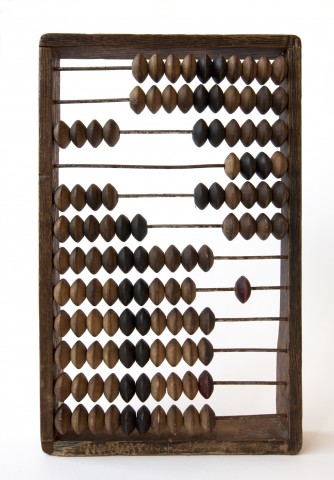
British linguist David Wilkins once said of language, “Without grammar, little can be conveyed; without vocabulary, nothing can be conveyed.”
This captures succinctly the fact that, while it is essential to have sufficient knowledge of a language’s vocabulary in order to describe and express what we wish, we won’t get very far using individual words without knowing how to organize them in logical ways. This logic is dictated by a language’s grammar.
As we look now at Hebrew grammar, you should know that it’s particularly logical and orderly. For example, the most common way to express that everything is okay in Hebrew is to say, הכל בסדר (hakol be-seder), or “everything is in order.”
A useful Hebrew language grammar guide must take into account that Hebrew is both synthetic, meaning it changes words’ meanings or relationships to other words by adding prefixes and suffixes (and, in Hebrew’s case, also by changing vowels), as well as analytic, meaning it uses helping words to indicate meaning and relationship.
A good command of Hebrew also requires proficiency in using grammatical gender and number correctly, as nouns, verbs, and adjectives are all gendered and must agree in terms of number. This can be particularly tricky for English speakers, who are lucky enough to not have to worry about grammatical gender, except in cases of biological gender (i.e. boy vs. girl or chicken vs. rooster).
A final prominent grammatical feature of Hebrew is the fact that its word order is sometimes—but not always—parallel to that of English.
In today’s lesson, we’ll take a look at some of the general features of Hebrew grammar so you can get acquainted with the structure of the language and identify any particular grammar points you’d like to work more on. Let’s get started!
 Table of Contents
Table of Contents
- General Hebrew Grammar Rules
- Gender and Number (For Nouns, Adjectives, and Verbs)
- Nikkud (Diacritical Marks)
- Hebrew’s Root System
- Synthetic Grammar
- HebrewPod101 is Your One Stop For All the Hebrew Grammar Help You Need
1. General Hebrew Grammar Rules
A good way to broach the subject of Modern Hebrew grammar is to look at how it compares to what we know about English grammar. We’ll cover three key points by way of comparing and contrasting Hebrew with English.
1. Basic Word Order

Let’s start by examining something basic that will generally look familiar when compared to English: the general word order you can expect in Modern Hebrew.
But before we jump in, let’s first define the words subject, verb, and object. In the context of grammar, the subject is the agent or the noun (a person, place, thing, or idea) that is responsible for whatever the verb describes. The verb is a word describing an action or a condition or state that’s being met. The object is the noun that the subject is acting upon or affecting through the verb.
With that in mind, let’s take a look at a simple example of how this plays out:
אני לומד עברית.
Ani lomed Ivrit.
“I study Hebrew.”
Here you can see the same syntax, or word order, as you would expect in English: SVO (Subject + Verb + Object). Luckily, most sentences will indeed follow this structure, though not always. One notable exception is the case of present tense sentences using the verb להיות (lehiyot), or “to be.” This verb is omitted—in fact, does not even exist—in present form. So don’t think something is missing if you see a sentence with just two words, like this one:
אני שרון.
Ani Sharon.
“I [am] Sharon.”
Or even one word, like this one:
חם!
Kham!
“[It’s] hot!”
2. Tenses

Speaking of tenses, there’s more good news. In Hebrew grammar, tenses are one aspect where Hebrew is immensely easier than English. This is because there are only three of them! That’s right. There are no progressive tenses (e.g. -ing verbs like going), nor are there any perfect tenses (I have gone or I have been going). There are only simple tenses: past, present, and future.
Here are some examples to illustrate:
A. Present
- אני הולכת הביתה עכשיו.
Ani holekhet habaytah akhshav.
“I am going home now.” [Literally: “I go home now.”]
B. Past
- אני הלכתי הביתה בעשר.
Ani halakhti habyatah be-’eser.
“I went home at ten.”
Note that because the verb conjugation itself tells us not only the tense of the verb, but also the person and number of the subject (in this case, first person singular), we often omit the pronoun in Hebrew. This is the more common way to say the same sentence:
- הלכתי הביתה בעשר.
Halakhti habaytah be-’eser.
“I went home at ten.”
C. Future
We also tend to omit the pronoun for future tense. You can find both forms below, one with the pronoun and the other without.
- אני אלך הביתה בעוד שעה.
Ani elekh habaytah be-’od sha’ah.
“I’m going home in an hour.” [Literally: “I will go home in an hour.”]
- אלך הביתה בעוד שעה.
Elekh habaytah be-’od sha’ah.
“I’m going home in an hour.” [Literally: “I will go home in an hour.”]
3. Verb Conjugations

Israelis are famous for their blunt honesty. In that vein, the honest truth is that verb conjugation is one of the most difficult aspects of Hebrew grammar for beginners.
This is because Hebrew uses the system of בניינים (binyanim), a word literally meaning “structures,” to pattern verb conjugation—and there are a whopping seven different בניינים. To make matters more complex, all verb conjugations are gendered and numbered as singular or plural, in addition to having different forms for different speakers (e.g. first person singular [“I”] versus first person plural [“we”] or second person singular [“you”]).
On the bright side, these patterns are very structured, as their name suggests, with few exceptions. Also to your advantage as a student of Hebrew is the fact that verbs are categorized logically into different בניינים based on the verb’s function. For instance, they are classified based on whether they are active verbs, passive verbs, or reflexive verbs.
Additionally, all of Hebrew is built on the שורש (shoresh), or “root,” system, which forms related words using the same cluster of two, three, or sometimes four consonants. This means that you will see most verbs represented in different בניינים (binyanim) to apply a meaning related to the שורש (shoresh) in different relationships.
For example, you can see how this works with the verb לשמוע (lishmo’a), meaning “to listen” or “to hear.” Here you can see how changes to the letters and vowels around the root consonants—ש (shin), מ (mem), and ע (‘ayin)—change the meaning from listening to something or someone, to being listened to or heard, to playing something (like a CD) or making it sound, etc.
- שמעתי שיר יפה ברדיו.
Shama’ti shir yafeh ba-rad’io.
“I heard a lovely song on the radio.”
- השיר שנשמע ברדיו הוא מאת אריק איינשטיין.
Ha-shir she-nishma’ ba-rad’io hu me’et Arik Aynshteyn.
“The song that was heard on the radio is by Arik Einstein.”
- בוא, אני אשמיע לך את השיר.
Bo, Ani ashmi’a’ lekha et ha-shir.
“Come, I’ll play the song for you.
The bottom line is that, yes, verb conjugations are one of the tougher things to learn in Hebrew, but they do have a very clear system of patterns. Once you crack that code, you’re home free.
Important Things to Know From Day 1

To sum up our general overview of Modern Hebrew grammar, let’s look at three golden rules for English speakers to keep in mind when embarking on any serious study of Hebrew grammar.
- Rule #1: As we mentioned earlier, unlike in English, there is no verb להיות (lehiyot), or “to be,” in the present tense. This means we often encounter very terse-looking sentences, sometimes with just one or two words.
- Rule #2: Unlike in English, there are only three tenses: simple present, simple past, and simple future. We can still express many of the same temporal states as English does, but we depend more on contextual words, such as time markers, to do so.
- Rule #3: Unlike in English, verb conjugations are quite systematic. They convey meaning beyond just person, number, and tense, based on the בניין (binyan), or conjugation pattern, used. As there are seven such conjugation patterns, don’t expect to master them all in one go. Little by little is the name of the game.
2. Gender and Number (For Nouns, Adjectives, and Verbs)

It’s very important to recognize that, unlike English, Hebrew is grammatically gendered, even when words are referring to something with no biological gender. This is similar to the Romance languages, such as Italian and French, as well as other languages like German and Russian. However, Hebrew works a bit differently, as it does not have separate masculine and feminine articles. In fact, ה (ha or he) is the only article in Hebrew, used whether a noun is masculine or feminine, singular or plural.
Hebrew has both masculine and feminine forms of many nouns, as well as nouns that only have a masculine form or a feminine form. Most, but not all, feminine nouns end in either ה (heh) or ת (tav). Another helpful tip is that, in plural form, most—but not all—masculine words end in -ים (-im); most, but not all, feminine words end in -ות (-ot).
Moreover, adjectives must agree with the gender of the noun they describe, and verbs must be conjugated according to the number and gender of their subject.
Here are just a few examples of how this affects words.
1. Nouns with both a masculine and a feminine form

- Masculine
- אני רופא.
Ani rofeh.
“I am a doctor.” - אני רופא ילדים.
Ani rofeh yeladim.
“I am a pediatrician.”
- אני רופא.
- Feminine
- אני רופאה.
Ani rof’ah.
“I am a doctor.”
- אני רופאת ילדים.
Ani rof’at yeladim.
“I am a pediatrician.”
- אני רופאה.
2. Nouns which are either masculine or feminine

- Masculine
- זה סוס.
Zeh sus.
“This is a horse.” - זה כיסא.
Zeh kise.
“This is a chair.” - זה אוטו.
Zeh oto.
“This is a car.”
- זה סוס.
- Feminine
- זאת צלחת.
Zot tzalakhat.
“This is a plate.” - זאת קערה.
Zot ke’arah.
“This is a bowl.” - זאת כוס.
Zot kos.
“This is a cup.”
- זאת צלחת.
3. Gender and number with adjectives

As mentioned, in Hebrew grammar, adjectives must be in agreement with the number and gender of the nouns they describe. Here are some examples:
- Masculine
- הוא רופא טוב.
Hu rofeh tov.
“He is a good doctor.” - הם רופאים טובים.
Hem rof’im tovim.
“They are good doctors.” - זה סוס גדול.
Zeh sus gadol.
“This is a big horse.” - אלה סוסים גדולים.
Eleh susim gedolim.
“These are big horses.”
- הוא רופא טוב.
- Feminine
- היא רופאה טובה.
Hi rof’ah tovah.
“She is a good doctor.” - הן רופאות טובות.
Hen rof’ot tovot.
“They are good doctors.” - זאת צלחת גדולה.
Zot tzalakhat gedolah.
“This is a big plate.” - אלה צלחות גדולות.
Eleh tzalakhot gedolot.
“These are big plates.”
- היא רופאה טובה.
4. Gender and number with verbs

As we mentioned earlier, Hebrew verbs also need to be in agreement with their respective subjects in terms of number and gender. Here are some examples of how verbs change to accommodate this:
- Masculine
- הרופא עובד בבית החולים.
Ha-rofe ‘oved be-veyt ha-kholim.
“The doctor works at the hospital.” - הרופאים עובדים בבית החולים.
Ha-rof’im ‘ovdim be-veyt ha-kholim.
“The doctors work at the hospital.”
- הרופא עובד בבית החולים.
- Feminine
- הרופאה עובדת בבית החולים.
Ha-rof’ah ‘ovedet be-veyt ha-kholim.
“The doctor works at the hospital.” - הרופאות עובדות בבית החולים.
Ha-rof’ot ‘ovdot be-veyt ha-kholim.
“The doctors work at the hospital.”
- הרופאה עובדת בבית החולים.
3. Nikkud (Diacritical Marks)

Another key point of both Hebrew grammar and Hebrew orthography is that of ניקוד (nikkud), or diacritical marks.
Because Hebrew is an abjad, written Hebrew letters are restricted to consonants or placeholders for vowels, while vowels themselves are represented by lines and dots above, below, or next to these letters. To make the ride even more exciting, written and printed Modern Hebrew—as well as, incidentally, the Torah, or Hebrew Bible—almost always omit these diacritical marks. This means that learners will need to first learn to read with them, and then wean themselves off of the written vowels, eventually learning to infer them as native Hebrew speakers do. Think of it like learning to ride a bicycle with training wheels, which are eventually taken off so you can ride freely.
As for the grammatical significance of ניקוד, there are two key points you should know.
1. Consonant Homonyms

Firstly, there are consonant homonyms. These are words whose letters (which, if you recall, are only consonants and vowel placeholders) look identical, but which are not actually homophones (words that sound the same). This is because the vowels make all the difference. We obviously need to know which word we’re dealing with if we want to get the rest of our grammar right.
Here’s an example of three letters that can spell out three totally different words, based on the vowels employed. Just remember that you would normally see these all written without the diacritical marks as דוד (equivalent to dvd), and would have to infer the right word based on the context. Tricky, I know. But the fun is in the challenge!
- דָּוִד
David
“David,” as in the proper name
- דּוֹד
Dod
“Uncle”
- דּוּד
Dud
“Boiler”
2. Construct States

Another way that ניקוד is related to grammar is in the case of construct states.
In Hebrew grammar, construct states are where two nouns work together to form either a compound noun or a genitive (possessive) phrase. In a construct state, the first noun will be the genitive of the second noun, making the second noun “possessed” by the first. In most cases, the words involved will see some change to their letters and their ניקוד, and in some cases only to their ניקוד. In the latter cases, considering that the vowels are generally omitted, you will once again have to learn to infer them.
Here are some examples:
- עוּגָה
‘Ugah
“Cake”
- עוּגַת שׁוֹקוֹלָד
‘Ugat shokolad
“Chocolate cake” (Literally: “Cake of chocolate”)
- מִלְחָמָה
Milkhamah
“War”
- מִלְחֶמֶת הָעַצְמָאוּת
Milkhemet ha-Atzma’ut
“The War of Independence”
- סְפָרִים
S’farim
“Books”
- סִפְרֵי יְלָדִים
Sifrey yeladim
“Children’s books”
- בַּיִת
Bayit
“House”
- בֵּית סֵפֶר
Beyt sefer
“School” (Literally: “House of the book”)
4. Hebrew’s Root System

Another key aspect is Hebrew’s root system.
One of the most interesting and unique aspects of the Hebrew language is its use of שורשים (shorashim), a system of using consonant roots to form words. Not only do these roots help you to acquire, recognize, and even infer new vocabulary, but they also make for a very systematic learning experience.
If you visually and sonically contrast Hebrew words belonging to one root with their English counterparts, you will see just how much more inviting Hebrew’s system is. Instead of having to memorize words that have no apparent connection other than their meanings, the relationships between Hebrew words is evident in both their look and their sound.
This root system applies to all parts of speech, as we’ve already seen.
Let’s have just a quick glimpse at some examples of words derived from a single root to better understand how this works in Hebrew. We’ll use the triconsonantal root אמר (equivalent to amr) here, but keep in mind that the patterns you see here can be applied to almost any root to express almost anything.
- לומר
Lomar
“To say”
- להיאמר
Lehe’amer
“To be said”
- אמירה
Amira
“Saying”
- מאמר
Ma’amar
“Article”
As you can clearly see, by identifying the root consonants, you can get some idea of the “family” a word is in, even if you’re unsure of its exact meaning. In this case, each of these words have to do with speaking or expressing oneself. Moreover, once you begin to recognize set patterns, you’ll be even better prepared to grasp a word’s meaning. For instance, the מ (mem) in מאמר (ma’amar) is a common prefix added to a root to create a noun form.
In addition to using this root system to form different but related words, Hebrew uses suffixes and prefixes to provide further information about words. This is particularly true for the genitive form. For instance, מאמרי (ma’amari) would be “my article,” מאמרו (ma’amaro) “his article,” and מאמרנו (ma’amarenu) “our article.”
5. Synthetic Grammar

A final, crucial grammar point to be aware of is that Hebrew is largely synthetic, meaning that it uses different morphologies, or physical forms of the same word, to convey meaning, relationships, and other information. We already saw this in terms of the genitive, but there are other cases where this is true as well.
Let’s look at some common situations, along with examples.
1. Prefixes for articles and prepositions

One way in which words can change is by gaining a prefix or prefixes in order to accommodate an article, a preposition, or both. Note how all of these look, visually, like single words, but (apart from the first example) they all consist of two or three elements.
- ספר
Sefer
“Book”
- הספר
Ha-sefer
“The book”
- מִסֵּפֶר
Mi-sefer
“From a book”
- מהספר
Me-ha-sefer
“From the book”
2. Suffixes for plurals and genitives

We also saw that suffixes are used, as in English, to form plurals. They can also be used to indicate that a noun is genitive, or both genitive and plural.
Here are some examples:
- ספר
Sefer
“Book”
- ספרי
Sifri
“My book”
- ספרו
Sifro
“His book”
- ספרים
Sfarim
“Books”
- ספריו
Sfarav
“His books”
- אהבה
Ahavah
“Love”
- אהבות
Ahavot
“Loves”
- אהבותיהם
Ahavoteyhem
“Their loves” (with “their” referring to masculine or mixed gender)
6. HebrewPod101 is Your One Stop For All the Hebrew Grammar Help You Need
As you can see, while Hebrew grammar does share some elements in common with English, there is plenty of new territory to be explored when learning this unique language. HebrewPod101 is here to help you every step of the way with clear and engaging lessons that break things down, step-by-step, with plenty of examples and usage in context.
Our lessons include both text- and audio-based units to keep your learning diverse and interesting. As you can see by the examples we linked to throughout the article, we have a truly vast wealth of materials at your disposal so that you can pick and choose as you wish based on your needs and interests.
We hope you’ve found this overview helpful, and we look forward to guiding and encouraging you along the way as you progress with your Hebrew studies. Be sure to let us know in the comments if you have any questions about what we covered today.
Shalom!










